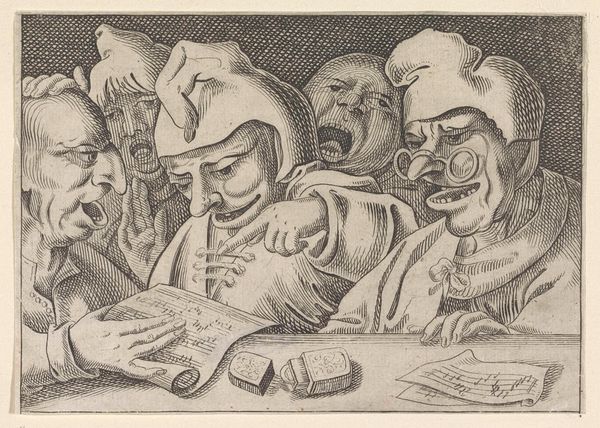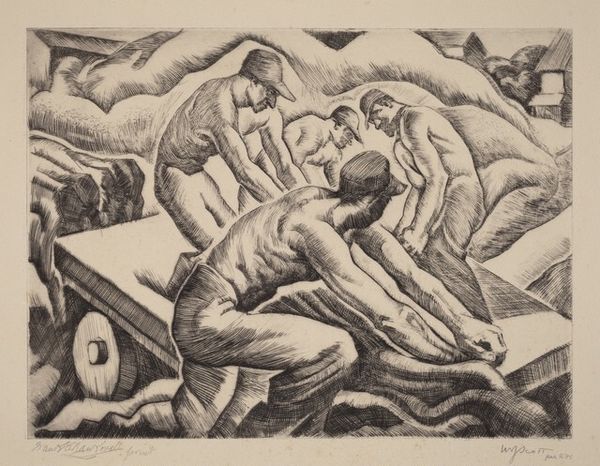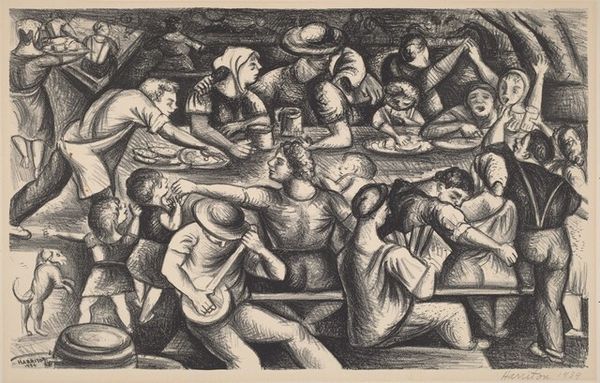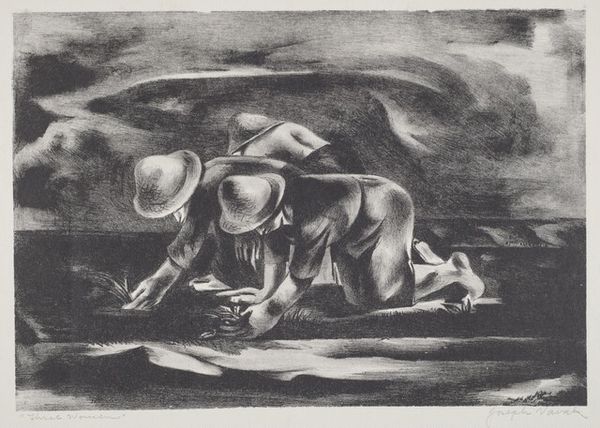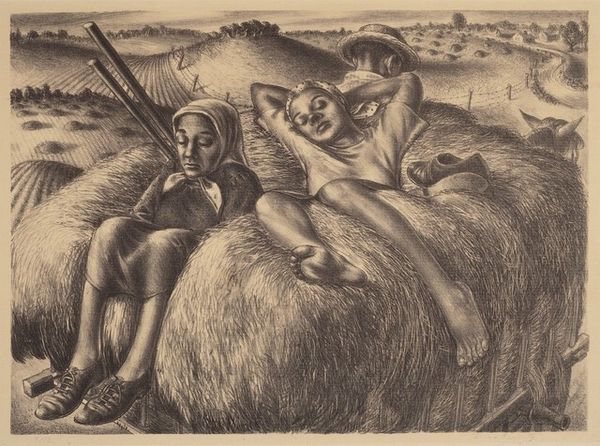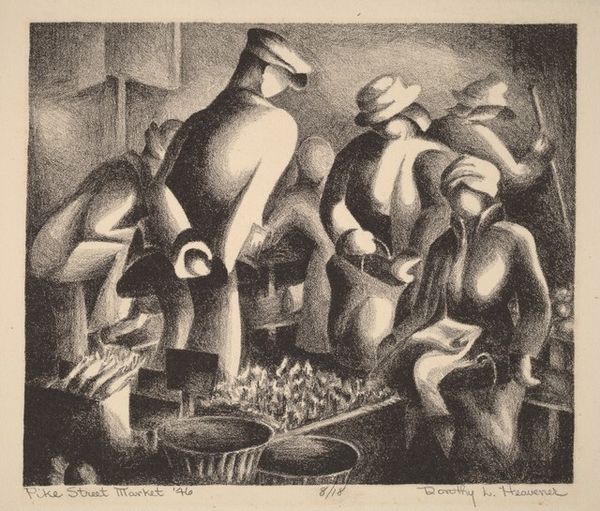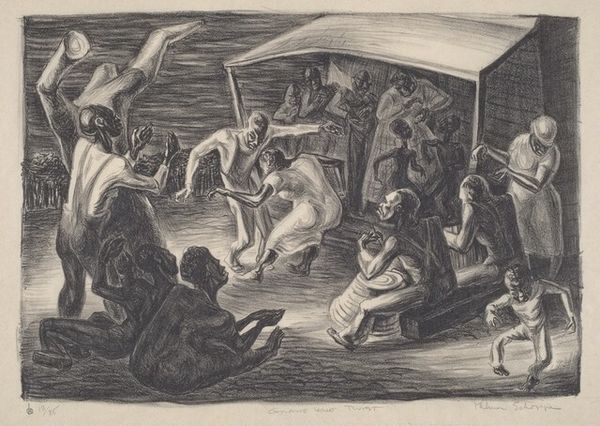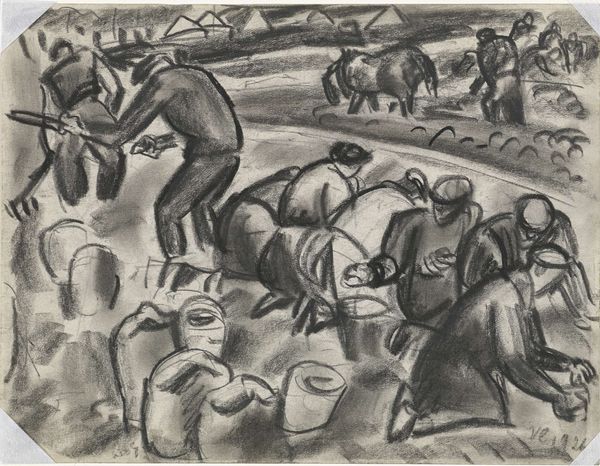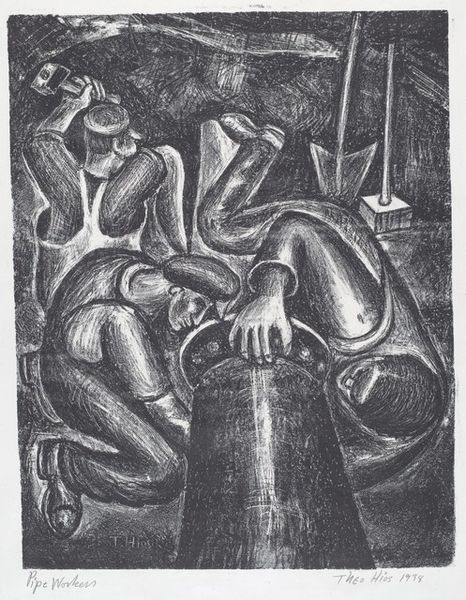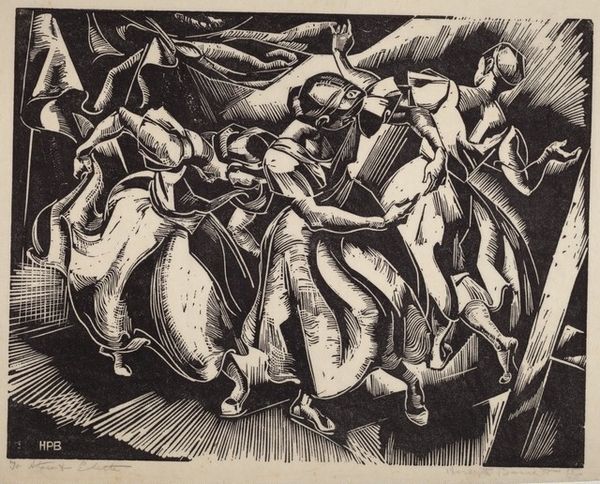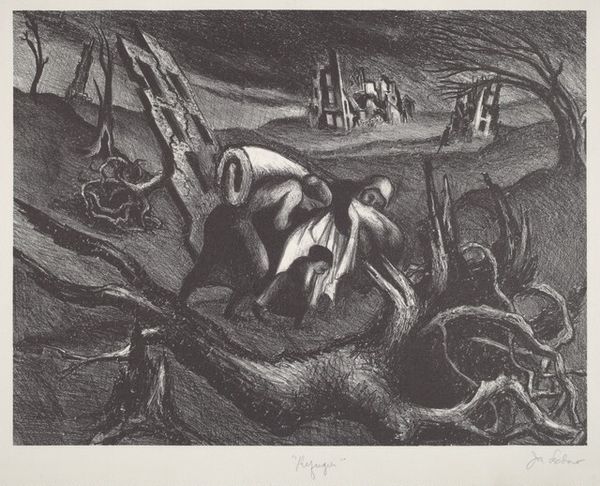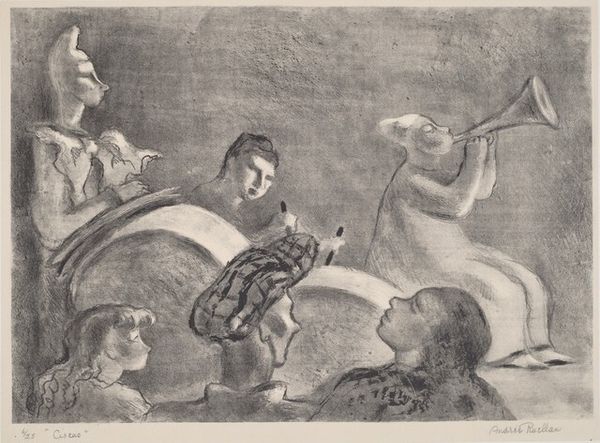
drawing, print, pencil
#
portrait
#
drawing
# print
#
pencil sketch
#
pencil drawing
#
pencil
#
surrealism
#
portrait drawing
#
genre-painting
#
realism
Dimensions: image: 235 x 295 mm sheet: 343 x 381 mm
Copyright: National Gallery of Art: CC0 1.0
Curator: This pencil drawing, titled "Bronc Riders," was created by Nadine Drummond, likely sometime in the 1940s. What are your first thoughts on this piece? Editor: It feels intimate, almost voyeuristic. Like we've stumbled upon a private moment shared among these figures. There’s a palpable sense of camaraderie mixed with maybe, apprehension? Curator: Drummond’s work often explored everyday life in the West, and this image is interesting for how it depicts the social aspects of a rodeo culture, rather than solely focusing on the spectacle itself. We have five men gathered in a circle. Editor: Exactly, and that is compelling here; the close huddle suggests a shared ritual before the event, or perhaps reflecting after it, the tension thick enough you can almost touch it. Considering the socio-political context, I wonder how notions of masculinity play into their poses and expressions? Are they displaying strength or vulnerability? Curator: That's insightful. The image exists within a broader artistic tradition of depicting the American West, one that often romanticizes the cowboy figure. Drummond provides an alternative. The visible number "6" on one rider’s back, for example, reminds us of the inherent competitive structures embedded within this world. Editor: Right, so we must confront how power operates even in seemingly "free" spaces like a rodeo. Drummond, perhaps unintentionally, sheds light on how these men negotiate both cooperation and competition under immense pressure. I would further posit that we should also reflect upon who has access to even participate in such events, let alone profit, in 1940s America. Curator: Her choices related to materials contribute significantly. The use of pencil evokes immediacy, as if capturing a fleeting moment. The limited tonal range further adds a sense of stark reality to this group. This departs considerably from celebratory portrayals often seen within similar genre paintings. Editor: It also makes one wonder about Drummond herself. Was she an insider or outsider to this culture? Did this affect her ability to be incisive here? Overall, what interests me the most about this work, despite its realist touches, is that undercurrent of social critique humming softly underneath the surface. Curator: It offers a valuable look at both the performative and the unscripted, peeling back layers behind our collective memory of the Old West, if you will. Editor: Ultimately, Drummond invites us to reconsider what stories we valorize and how others might subtly dismantle myths of identity and history.
Comments
No comments
Be the first to comment and join the conversation on the ultimate creative platform.

